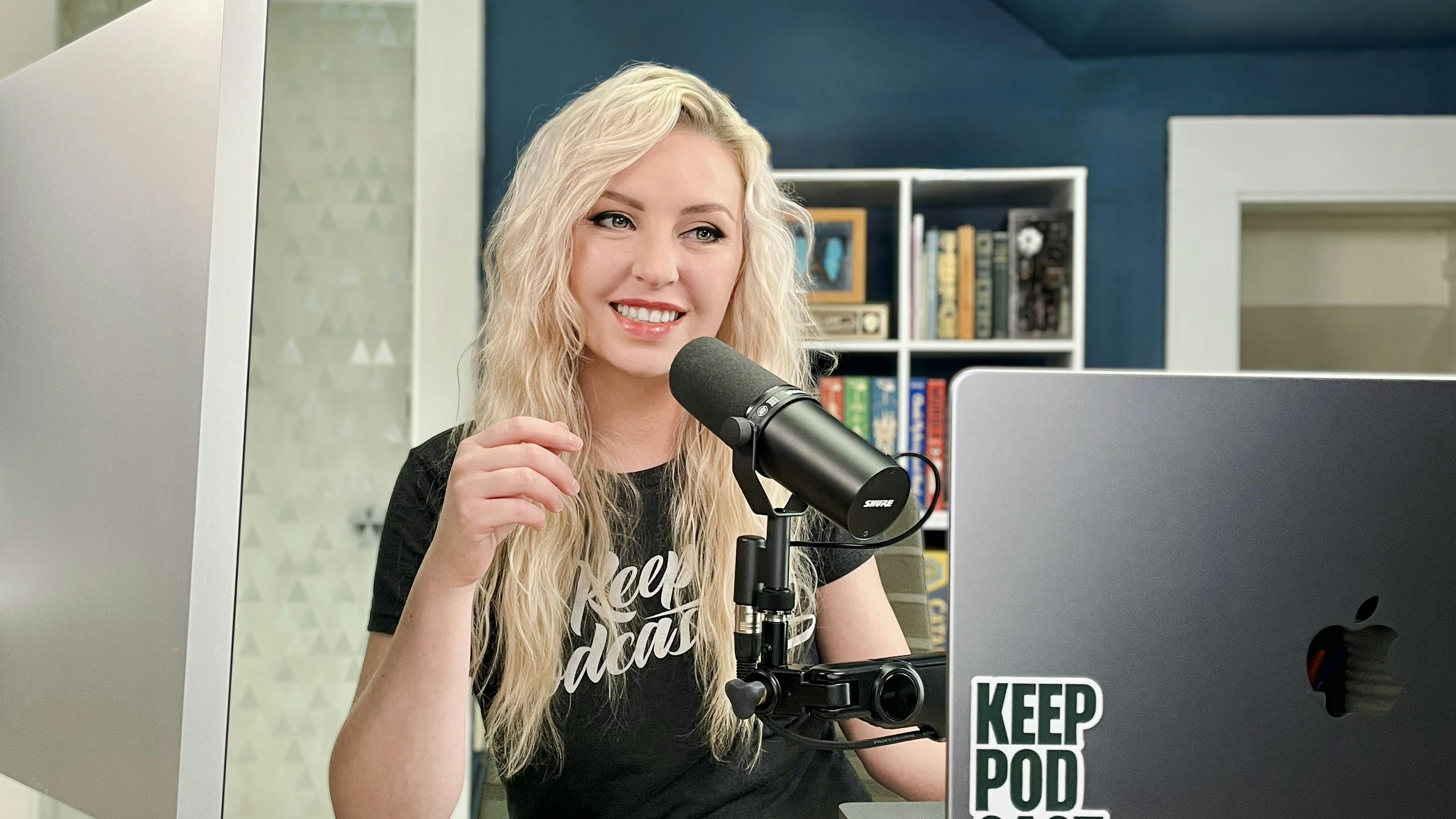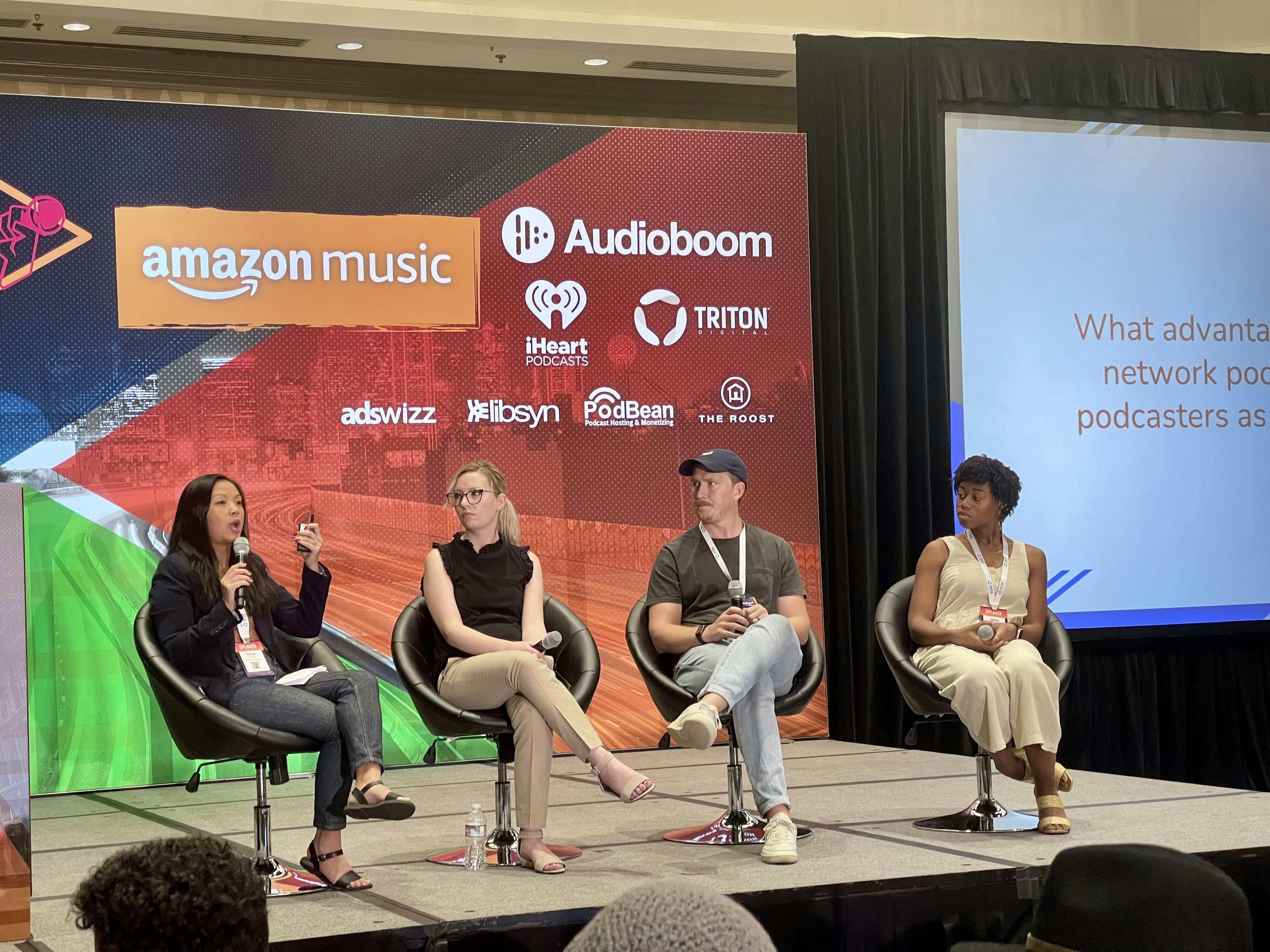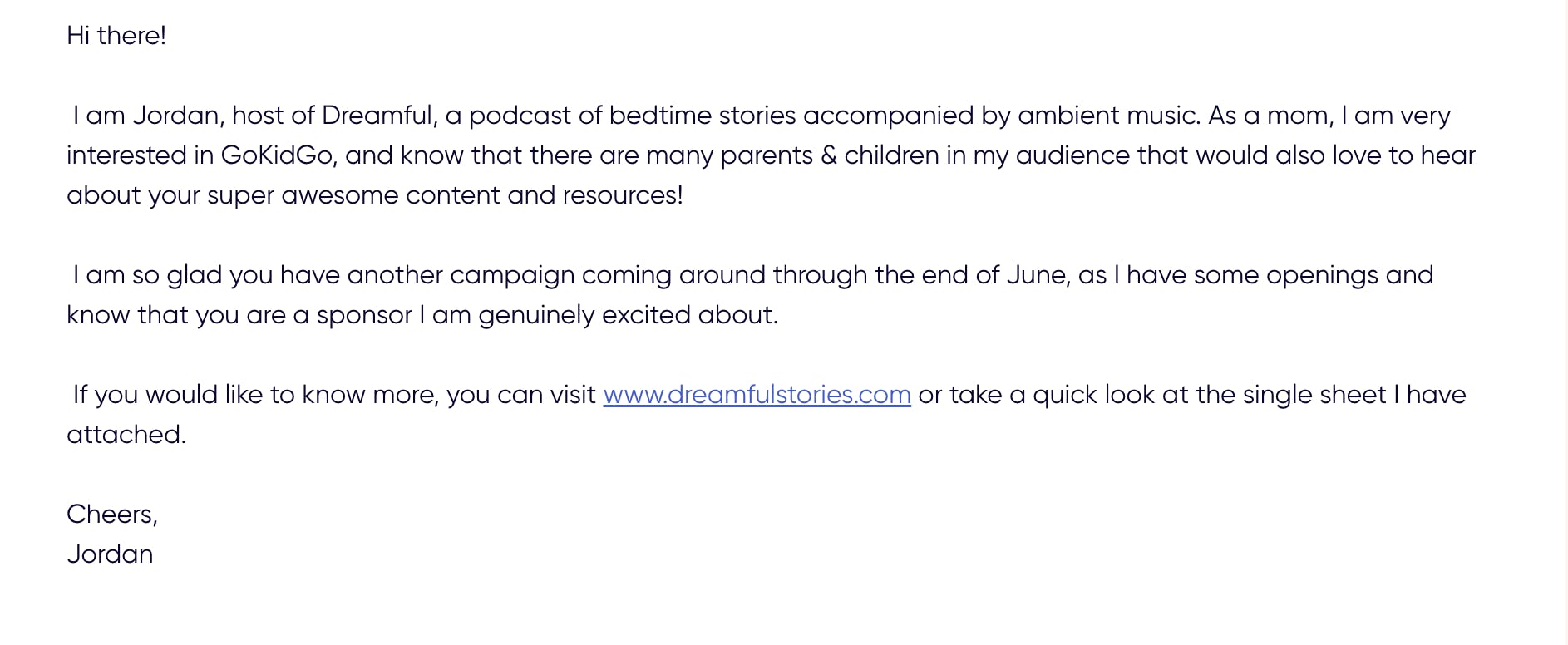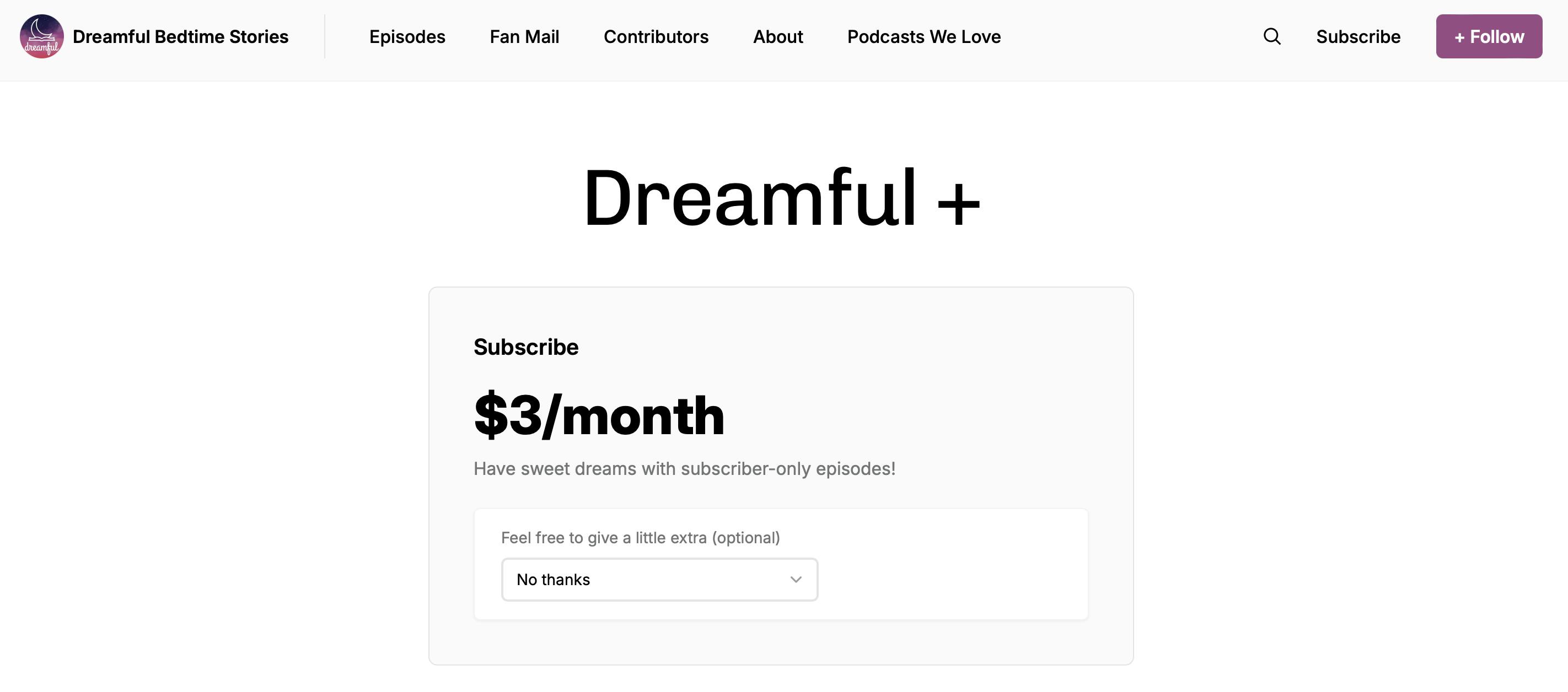
How I Make Money Podcasting (What Still Works in 2025)
I started my podcast, Dreamful Bedtime Stories, as a hobby to help my kids fall asleep, so I never expected that it would make money.
As Dreamful grew, I realized that if I wanted to keep creating high-quality episodes, I needed to make the podcast sustainable. After six years and more than 13 million downloads, I’ve tried nearly every monetization option out there, learning what works (and what doesn’t) along the way.
Now, I want to share those lessons with you. Whether you’re launching your first show or looking to grow an existing one, my goal is to help you find the monetization strategy that fits your podcast.
What "Podcast Monetization" Really Means
Podcast monetization simply means finding ways for your podcast to generate income, whether that’s covering your hosting fees, paying for production tools, or turning your show into a full-time gig.
There’s no single “right” path for podcast monetization. Some podcasters focus on ads and sponsorships; others lean on paid subscriptions or listener support. What matters most is choosing methods that align with your show’s goals and feel authentic to your audience.
When to Monetize Your Podcast
Most podcasters hope to make money from their show. But jumping into monetization too early can lead to the same mistake I made: spreading yourself too thin, and trying every income stream in a desperate attempt to “find success.”
I spent a lot of time creating content my listeners didn’t really want, designing merch nobody asked for, all in the name of what I thought was growth. Looking back, it was exhausting and mostly unproductive.
PRO TIP
Wait until monetizing will enhance your podcast, not distract from it.
I bootstrapped Dreamful for years by recording late at night, editing on weekends, and scrolling royalty-free music sites for hours. After a while, time became my biggest expense.
That’s when I realized something had to change. I wanted to invest in better tools and reclaim some of that time, but I didn’t want Dreamful to turn into an ad-filled production.
I was finally able to make money from my podcast when it became a natural next step to make my show better, not just to produce profit.
Finding the Right Monetization Strategy
There are a lot of monetization strategies out there. So when you’re ready to monetize your show, it can be confusing to know where to start.
"Past me" would have said something along the lines of, “Just try something, but be prepared for not a single person to buy what you’re selling.”
But “older, wiser me” is going to say, “Don’t rely on your own assumptions about what listeners will pay for. Ask them.”
Don't waste your time and energy on an idea that might or might not be successful. Instead, do a poll on social media and ask listeners what they want from you.
In this guide, we’ll walk through:
- Sponsorships
- Affiliate marketing
- Subscriptions/Premium content
- Listener support
By leaning on real feedback instead of assumptions, you can see which of these strategies makes the most sense for your show and listenership.
Sponsorships
A sponsorship is a partnership between a podcaster and a brand that wants to reach your audience. The brand pays you a fee in exchange for promotion inside your episodes, on your website, or through your email list.
Sponsorship deals can seem like a mysterious rite of passage for content creators. It's exciting, but also intimidating. Especially when the brand doesn’t follow a typical pay structure or workflow.
I still remember my first sponsor: Patchology, a skincare and wellness brand. They reached out about collaborating and initially offered to tip $50 on my Patreon if I mentioned their product. I explained how podcast sponsorships usually work and negotiated a flat-fee bundle: three ad spots and a listener giveaway for $300.
It was a small deal, but it taught me how to advocate for the value of my show and gave me the confidence to start pitching other brands.

Since then, I’ve worked with brands like BetterHelp, Evite, Wondery, and HelloFresh, each one helping me refine my approach and strengthen my credibility.
Working your way up to larger brands builds social proof for your podcast and strengthens future sponsor pitches. I also include short clips from past ad reads so potential sponsors can hear how I promote products in an authentic, professional way.
I’ve even shared some of these lessons publicly, like during my talk at PodConf 2023 and Podcast Movement 2025, where I helped other podcasters land sponsorships that truly fit their audience.

If you want to work with sponsors, start by putting together a thoughtful pitch and setting your rate. Take some time to consider the types of brands that would genuinely align with your podcast.
Here’s an example of a pitch I sent to GoKidGo, a children’s storytelling network that eventually sponsored Dreamful and ran a feed drop with us. This deal ended up being worth $3,525.

This pitch wasn’t flashy, but it was genuine and clearly explained why our audience was a natural fit.
How Podcast Sponsorships Have Changed
It’s easy to get excited about sponsorships, and for good reason. They can be one of the most rewarding ways to monetize your show. But it’s worth knowing that the sponsorship landscape has shifted quite a bit over the past few years.
Early on, brands loved the personal, grassroots feel of podcasting. As the industry grew, more advertisers started working through media agencies that bundle ad buys across multiple shows. This means it can take more time and effort for independent podcasters to land direct deals than it used to.
That doesn’t mean sponsorships aren’t worth pursuing; they absolutely can be! But it helps to go in with realistic expectations and focus on finding brands that truly fit your audience, even if the payouts start smaller at first.
Affiliate Marketing
Affiliate marketing is when you promote a product or service and earn a commission on any sales made through your unique referral link. It’s a way to make money from your podcast without creating your own products!
For me, the affiliate programs that worked best were the super simple ones. I would sign up, get a referral code, and record a few ads mentioning the product and put the affiliate link in my show notes and on my website. It wasn’t a lot of work, but it brings in a decent return.
PRO TIP
Not every affiliate program is that easy. I tried the Amazon Affiliate Program and quickly realized it was very time-intensive and more work than I was willing to put in. It could be worth it for you, but I have found more success aligning with strategic affiliate partners and timing the promotions well.
For example, I love puzzles, and I once bought an exceptional wooden jigsaw puzzle that I thought my audience would also enjoy. I discovered the company had a referral program and found a way to tie it into content that would resonate with listeners.
I recorded an ad for the puzzle, included the link in the show notes, and started earning a little here and there, sometimes around $100 at a time!
When the holidays approached, I created an affiliate ad highlighting these puzzles as perfect holiday gifts. That quarter, I earned over $1,000 in referral kickbacks, and for the following months, the payouts stayed steady around $500–$700.

This taught me to pick products that I genuinely love and time the ads thoughtfully. That formula turned affiliate marketing into a consistent, enjoyable income stream for my podcast!
Subscriptions and Premium Content
Subscriptions, sometimes called premium content, are a way for listeners to pay for bonus content, early access, or other exclusive perks.
I decided to try a podcast subscription simply because that’s what my favorite podcasts offered. As a listener myself, I’m happy to subscribe to bonus episodes of shows I love, so I figured it was worth giving it a shot.
I use Buzzsprout Subscriptions, which makes it really easy to set up a paid tier. One of the biggest benefits of starting early is that most subscription platforms (including Buzzsprout) operate on a “we don’t get paid until you do” model. That means there’s no upfront cost to create your subscription and Buzzsprout only takes 15% if you make money, so you can experiment or start building a catalog of bonus episodes while your audience grows!

As time went on, I realized that even when I got too busy to offer anything beyond bonus episodes, my subscribers stayed consistent. That told me everything I needed to know: bonus episodes were what my listeners cared about the whole time.
It was a powerful reminder to listen to your audience. They will show you what's valuable; all you have to do is pay attention.
Listener Support
Listener support is one of the easiest ways to start monetizing your podcast. It lets your audience contribute financially to support the content you’re already creating without requiring anything extra.
PRO TIP
If I could go back, I’d lean into listener support first.
Starting with listener support is a great way to gauge whether there’s real demand for your show. If listeners are willing to chip in a few dollars each month, it’s a good sign that your content resonates.
It also helps you build the habit of asking for support and crafting a clear call to action, which will serve you well as you explore other monetization options!
I’ve also covered this topic in depth at Podcast Movement 2025, sharing how sponsorships, subscriptions, and listener support can create a sustainable revenue mode. Podcast Movement has been kind enough to post this talk YouTube.
Compliance: Keeping It Legal and Ethical
Compliance might not be the most exciting part of podcast monetization, but it’s one of the most important, especially as you start working with bigger brands. Following FTC guidelines protects both you and your listeners by keeping everything transparent and trustworthy.
FTC Act
The FTC Act applies to any product recommendation or endorsement made on behalf of a sponsor. So, if you’re talking about a product you bought yourself and haven’t received anything in return, you don’t need to worry about disclosures.
But, if a brand gives you any kind of value with the expectation that you’ll promote their product, such as:
- Paying you money
- Offering an affiliate commissions
- Providing free products or samples
- Offering discounts or perks
Then, you need to disclose that relationship clearly. The simplest way is by saying, “This episode is sponsored by…” or “This podcast is brought to you by…” before your ad copy begins.
For a deeper dive into what counts as an endorsement and how to disclose properly, the FTC’s Endorsement Guides: What People Are Asking is an excellent resource.
2024 FTC Rule
Another important update: the 2024 FTC rule (16 CFR Part 465) bans fake or misleading reviews and testimonials across all platforms, including podcasts.
iHeartMedia and Google had a $9.4 million slip-up a few years back after hosts gave false first-person endorsements for a cell phone that wasn't even released yet. The FTC finalized orders against both companies, and separate settlements required the $9.4 million in penalties.
In short:
- Never claim to have personal experience with a product if you haven’t actually used it.
- Don’t read or record reviews written by someone else as if they are your own words.
- Always be upfront and truthful in how you present sponsored products.
Transparency builds credibility, and credibility builds long-term brand and audience trust. So always be honest, always disclose.
The Future of Podcast Monetization
We’re in a new era of value-for-value podcasting, where donations, tips, and subscriptions reward creators for building genuine relationships with their listeners.
As audiences become more selective, generic, mass-buy programmatic ads will likely continue to decline. Listeners prefer shows that respect their attention and advertisers want alignment (not just reach).
The future of podcast monetization lies in authenticity and connection. If you want to monetize your podcast, focus on creating real value for your audience. That’s what has kept Dreamful thriving all these years, and I predict it will for your podcast, too.
Jordan Blair
Jordan Blair is the podcast producer for Buzzsprout and co-host of Buzzcast. She's also the creator of Dreamful Bedtime Stories, a podcast with over 13 million downloads. Jordan has worked with brands like BetterHelp, Wondery, Evite, and HelloFresh. She has spoken at Podcast Movement and PodConf on helping podcasters confidently monetize their shows.
FAQs:
What are other revenue streams to monetize your podcast?
Some podcasters, or even content creators, decide to sell merch like t-shirts, do live events or live streams, offer ad-free episodes, solicit dynamic ads, or sell digital products. These can be a good fit if you have an entrepreneur mindset and the products fit your target audience.
Do you need to have a successful podcast to monetize?
While it can feel like you need to be a full-time podcaster or Joe Rogan to make money from your show, that’s just not true. Even beginner podcasters, regardless of audience size, can have successful podcast monetization streams. The key is creating high-quality content and offering it at a price your audience is willing to pay.
What are some marketing strategies to promote my offerings?
You can let your audience know about your bonus podcast content through call to actions in your episodes, running a podcast ad or mid-roll in your own show, and sharing on social media platforms. A quick TikTok or LinkedIn post can also be helpful to share a tutorial for how to access your bonus content.
Can listeners access my premium content on podcast apps?
Yes, but it just depends on how you set everything up.
Apple Podcasts Subscriptions and Spotify's Paid Subscriptions let listeners access premium episodes inside their own apps.
If your episodes are in a premium feed, like with a Buzzsprout Subscription, paid listeners get a private RSS feed that they can add to Appel Podcasts and most podcast listening apps.
How should I choose my monetization strategy?
I recommend asking your audience what type of content they want to see from you! Some ideas from popular podcasts are to offer behind-the-scenes content related to your podcast topic or your best podcast episodes. Other podcasters decide to sell merch, which is a good option if you have a large and interested audience. You can also streamline your workflow and offer early access to episodes.
